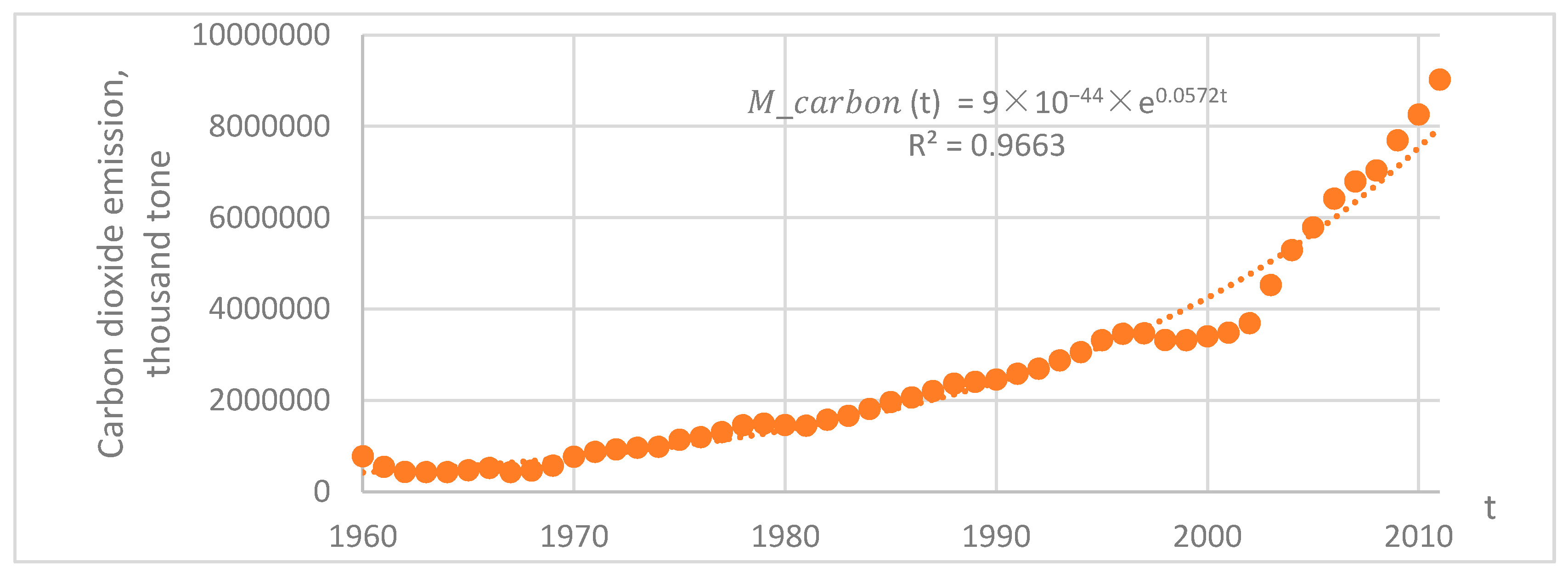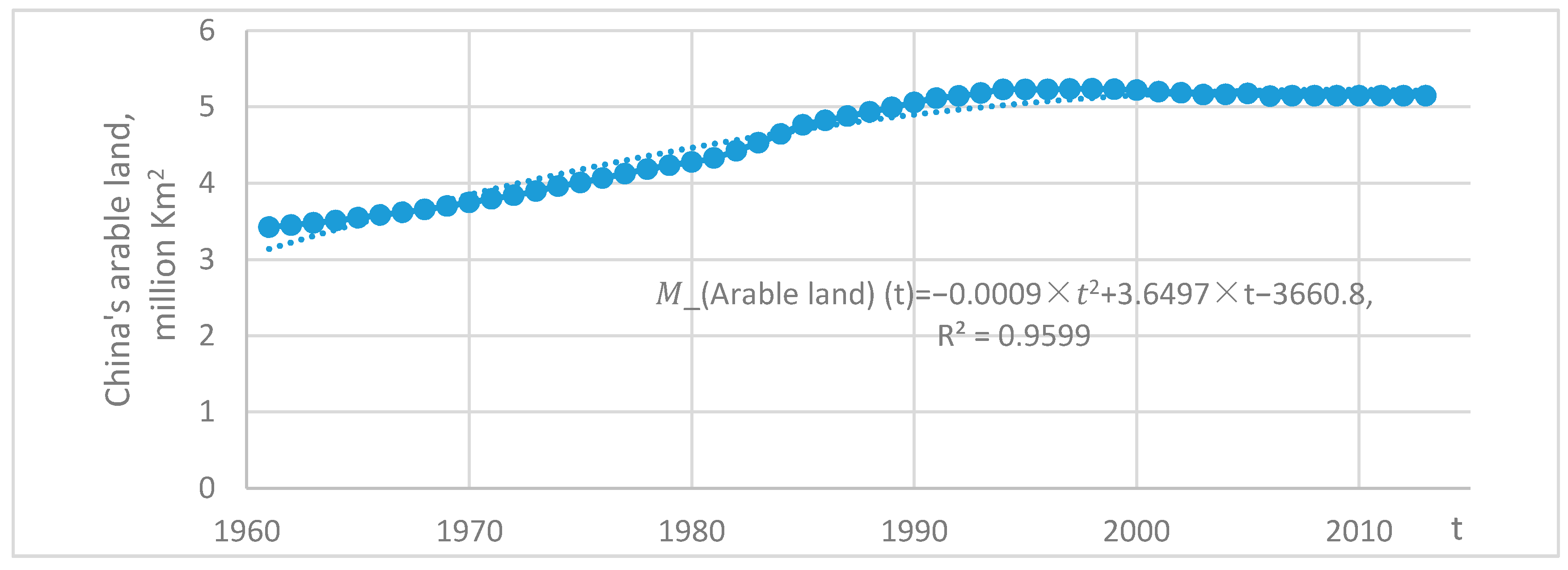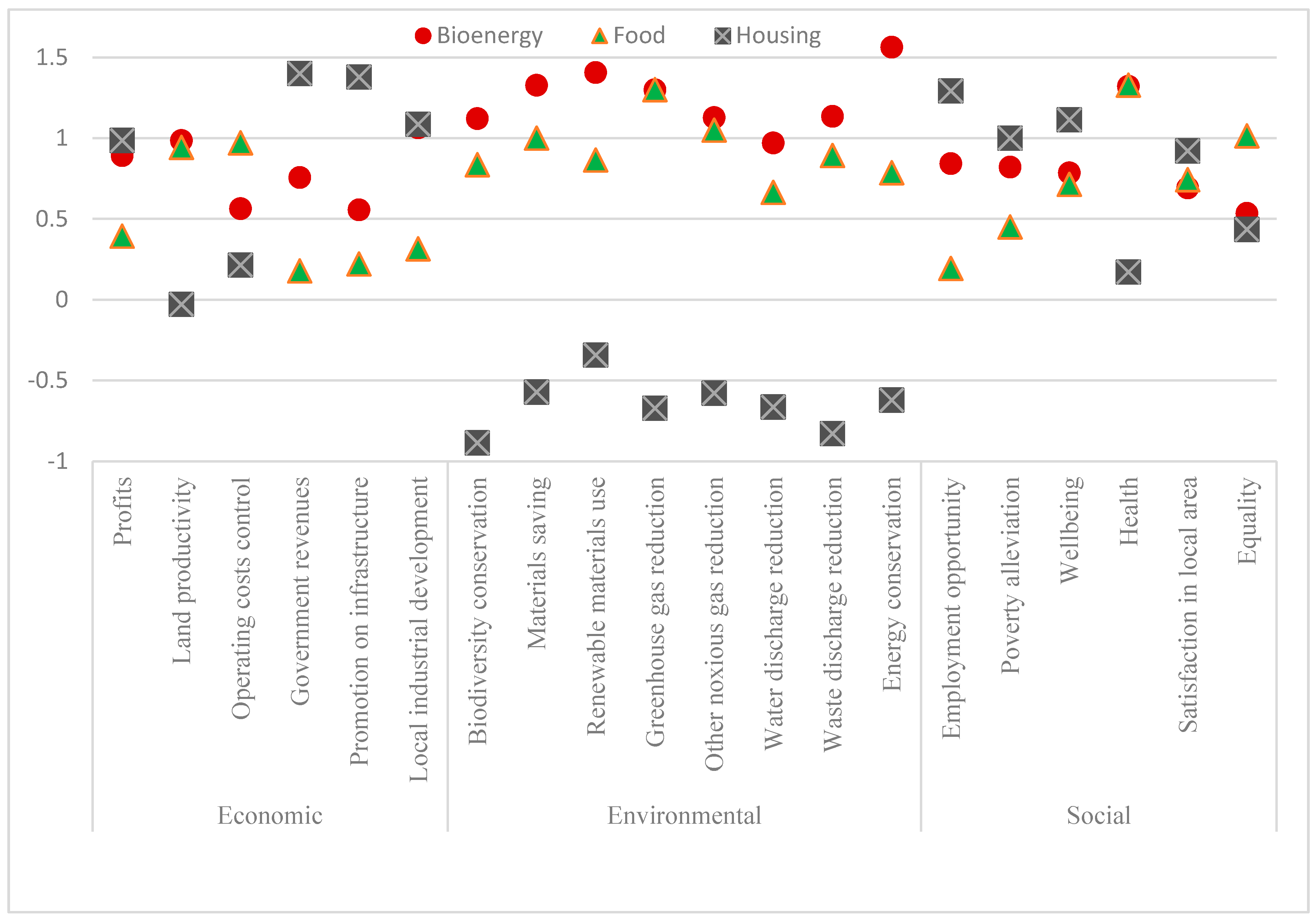Analysis of the Relative Sustainability of Land Devoted to Bioenergy: Comparing Land-Use Alternatives in China
Abstract
:1. Introduction
2. Merits and Problems of Land-Use for Bioenergy
2.1. Promoting Agricultural and Rural Development vs. Challenges for Private Sectors
2.2. Reducing Carbon Emissions vs. Environmental Threats
2.3. Meeting Energy Demand vs. Food Insecurity
3. Analysis of the Sustainability of Land-Use for Three Alternatives
3.1. Case: China
3.2. Methodology: Using the Multi-Criteria Analysis
3.3. Specifying Criteria of Sustainability
3.4. Weighting Indicators
3.5. Survey and Data
4. Results
4.1. Scores of Indicators
4.2. Overall Sustainability Scores of Three Alternatives
5. Conclusions and Implication
Acknowledgments
Author Contributions
Conflicts of Interest
References
- Harris, Z.M.; Spake, R.; Taylor, G. Land use change to bioenergy: A meta-analysis of soil carbon and ghg emissions. Biomass Bioenergy 2015, 82, 27–39. [Google Scholar] [CrossRef]
- Lin, G.C.S.; Ho, S.P.S. China’s land resources and land-use change: Insights from the 1996 land survey. Land Use Policy 2003, 20, 87–107. [Google Scholar] [CrossRef]
- Burkholder, S. The new ecology of vacancy: Rethinking land use in shrinking cities. Sustainability 2012, 4, 1154–1172. [Google Scholar] [CrossRef]
- Foley, J.A.; DeFries, R.; Asner, G.P.; Barford, C.; Bonan, G.; Carpenter, S.R.; Chapin, F.S.; Coe, M.T.; Daily, G.C.; Gibbs, H.K.; et al. Global consequences of land use. Science 2005, 309, 570–574. [Google Scholar] [CrossRef] [PubMed]
- Kalnay, E.; Cai, M. Impact of urbanization and land-use change on climate. Nature 2003, 423, 528–531. [Google Scholar] [CrossRef] [PubMed]
- Wuelser, G. Towards adequately framing sustainability goals in research projects: The case of land use studies. Sustain. Sci. 2014, 9, 263–276. [Google Scholar] [CrossRef]
- Apollonio, C.; Balacco, G.; Novelli, A.; Tarantino, E.; Piccinni, A.F. Land use change impact on flooding areas: The case study of cervaro basin (Italy). Sustainability 2016. [Google Scholar] [CrossRef]
- Skevas, T.; Hayden, N.J.; Swinton, S.M.; Lupi, F. Landowner willingness to supply marginal land for bioenergy production. Land Use Policy 2016, 50, 507–517. [Google Scholar] [CrossRef]
- Searchinger, T.; Heimlich, R.; Houghton, R.A.; Dong, F.; Elobeid, A.; Fabiosa, J.; Tokgoz, S.; Hayes, D.; Yu, T.-H. Use of us croplands for biofuels increases greenhouse gases through emissions from land-use change. Science 2008, 319, 1238–1240. [Google Scholar] [CrossRef] [PubMed]
- SooHoo, W.M.; Wang, C.Z.; Li, H.X. Geospatial assessment of bioenergy land use and its impacts on soil erosion in the us midwest. J. Environ. Manag. 2017, 190, 188–196. [Google Scholar] [CrossRef] [PubMed]
- Wu, F.; Zhang, D.; Zhang, J. Will the development of bioenergy in china create a food security problem? Modeling with fuel ethanol as an example. Renew. Energy 2012, 47, 127–134. [Google Scholar] [CrossRef]
- Colantoni, A.; Delfanti, L.; Recanatesi, F.; Tolli, M.; Lord, R. Land use planning for utilizing biomass residues in tuscia romana (central Italy): Preliminary results of a multi criteria analysis to create an agro-energy district. Land Use Policy 2016, 50, 125–133. [Google Scholar] [CrossRef]
- Kumar, B.; Hiremath, R.B.; Balachandra, P.; Ravindranath, N.H. Bioenergy and food security: Indian context. Energy Sustain. Dev. 2009, 13, 265–270. [Google Scholar] [CrossRef]
- Hazell, P.; Pachauri, R. Bioenergy and Agriculture: Promises and Challenges; IFPRI: Washington, WA, USA, 2006; Volume 2020. [Google Scholar]
- Rosegrant, M.W.; Msangi, S.; Sulser, T.B. Bioenergy and Agriculture: Promises and Challenges: Biofuels and the Global Food Balance; International Food Policy Research Institute: Washington, WA, USA, 2014. [Google Scholar]
- Organization, A. The State of Food and Agriculture 2008: Biofuels: Prospects, Risks and Opportunities; Food & Agriculture Organization: Rome, Italy, 2008. [Google Scholar]
- De La Torre Ugarte, D.G. Developing Bioenergy Economic and Social Issues: Bioenergy and Agriculture Promises and Challenges; International Food Policy Research Institute (IFPRI): Washington, WA, USA, 2006. [Google Scholar]
- Farrell, A.E.; Plevin, R.J.; Turner, B.T.; Jones, A.D.; O’Hare, M.; Kammen, D.M. Ethanol can contribute to energy and environmental goals. Science 2006, 311, 506–508. [Google Scholar] [CrossRef] [PubMed]
- Arevalo, J.; Ochieng, R.; Mola-Yudego, B.; Gritten, D. Understanding bioenergy conflicts: Case of a jatropha project in kenya’s tana delta. Land Use Policy 2014, 41, 138–148. [Google Scholar] [CrossRef]
- Gao, Y.; Skutsch, M.; Drigo, R.; Pacheco, P.; Masera, O. Assessing deforestation from biofuels: Methodological challenges. Appl. Geogr. 2011, 31, 508–518. [Google Scholar] [CrossRef]
- Bioenergy, I. Bioenergy—A Sustainable and Reliable Energy Source; International Energy Agency Bioenergy: Paris, France, 2009. [Google Scholar]
- Koizumi, T. Biofuel and food security in china and japan. Renew. Sustain. Energy Rev. 2013, 21, 102–109. [Google Scholar] [CrossRef]
- Mukherjee, I.; Sovacool, B.K. Palm oil-based biofuels and sustainability in southeast asia: A review of indonesia, malaysia, and thailand. Renew. Sustain. Energy Rev. 2014, 37, 1–12. [Google Scholar] [CrossRef]
- Miyake, S.; Smith, C.; Peterson, A.; McAlpine, C.; Renouf, M.; Waters, D. Environmental implications of using ‘underutilised agricultural land’ for future bioenergy crop production. Agric. Syst. 2015, 139, 180–195. [Google Scholar] [CrossRef]
- Huang, I.B.; Keisler, J.; Linkov, I. Multi-criteria decision analysis in environmental sciences: Ten years of applications and trends. Sci. Total Environ. 2011, 409, 3578–3594. [Google Scholar] [CrossRef] [PubMed]
- Gamper, C.D.; Turcanu, C. On the governmental use of multi-criteria analysis. Ecol. Econ. 2007, 62, 298–307. [Google Scholar] [CrossRef]
- Morimoto, R. Incorporating socio-environmental considerations into project assessment models using multi-criteria analysis: A case study of sri lankan hydropower projects. Energy Policy 2013, 59, 643–653. [Google Scholar] [CrossRef]
- Popiolek, N.; Thais, F. Multi-criteria analysis of innovation policies in favour of solar mobility in france by 2030. Energy Policy 2016, 97, 202–219. [Google Scholar] [CrossRef]
- Fontana, V.; Radtke, A.; Fedrigotti, V.B.; Tappeiner, U.; Tasser, E.; Zerbe, S.; Buchholz, T. Comparing land-use alternatives: Using the ecosystem services concept to define a multi-criteria decision analysis. Ecol. Econ. 2013, 93, 128–136. [Google Scholar] [CrossRef]
- Park, D.; Kim, Y.; Um, M.-J.; Choi, S.-U. Robust priority for strategic environmental assessment with incomplete information using multi-criteria decision making analysis. Sustainability 2015, 7, 10233–10249. [Google Scholar] [CrossRef]
- Erzurumlu, S.S.; Erzurumlu, Y.O. Sustainable mining development with community using design thinking and multi-criteria decision analysis. Resour. Policy 2015, 46, 6–14. [Google Scholar] [CrossRef]
- Buchholz, T.; Rametsteiner, E.; Volk, T.A.; Luzadis, V.A. Multi criteria analysis for bioenergy systems assessments. Energy Policy 2009, 37, 484–495. [Google Scholar] [CrossRef]
- Clo, S.; Battles, S.; Zoppoli, P. Policy options to improve the effectiveness of the eu emissions trading system: A multi-criteria analysis. Energy Policy 2013, 57, 477–490. [Google Scholar] [CrossRef]
- Klein, S.J.W.; Whalley, S. Comparing the sustainability of us electricity options through multi-criteria decision analysis. Energy Policy 2015, 79, 127–149. [Google Scholar] [CrossRef]
- Billig, E.; Thrän, D. Evaluation of biomethane technologies in europe—Technical concepts under the scope of a delphi-survey embedded in a multi-criteria analysis. Energy 2016, 114, 1176–1186. [Google Scholar] [CrossRef]
- Bolger, F.; Wright, G. Use of expert knowledge to anticipate the future: Issues, analysis and directions. Int. J. Forecast. 2017, 33, 230–243. [Google Scholar] [CrossRef]
- Di Zio, S.; Maretti, M. Acceptability of energy sources using an integration of the delphi method and the analytic hierarchy process. Qual. Quant. 2014, 48, 2973–2991. [Google Scholar] [CrossRef]
- Dalkey, N.; Helmer, O. An experimental application of the delphi method to the use of experts. Manag. Sci. 1963, 9, 458–467. [Google Scholar] [CrossRef]
- Cho, S.; Kim, J.; Heo, E. Application of fuzzy analytic hierarchy process to select the optimal heating facility for korean horticulture and stockbreeding sectors. Renew. Sustain. Energy Rev. 2015, 49, 1075–1083. [Google Scholar] [CrossRef]
- Oltean-Dumbrava, C.; Miah, A. Assessment and relative sustainability of common types of roadside noise barriers. J. Clean. Prod. 2016, 135, 919–931. [Google Scholar] [CrossRef]
- Gill, R.T.; Thornton, S.F.; Harbottle, M.J.; Smith, J.W.N. Sustainability assessment of electrokinetic bioremediation compared with alternative remediation options for a petroleum release site. J. Environ. Manag. 2016, 184, 120–131. [Google Scholar] [CrossRef] [PubMed]
- Brazier, J.E.; Harper, R.; Jones, N.; O’cathain, A.; Thomas, K.; Usherwood, T.; Westlake, L. Validating the sf-36 health survey questionnaire: New outcome measure for primary care. BMJ 1992, 305, 160–164. [Google Scholar] [CrossRef] [PubMed]
- Antonovsky, A. The structure and properties of the sense of coherence scale. Soc. Sci. Med. 1993, 36, 725–733. [Google Scholar] [CrossRef]
- Western, J.; Stimson, R.; Baum, S.; Van Gellecum, Y. Measuring community strength and social capital. Reg. Stud. 2005, 39, 1095–1109. [Google Scholar] [CrossRef]
- Hassan, L.M.; Shiu, E.; Walsh, G. A multi-country assessment of the long-term orientation scale. Int. Mark. Rev. 2011, 28, 81–101. [Google Scholar] [CrossRef]
- Roweis, S.T.; Saul, L.K. Nonlinear dimensionality reduction by locally linear embedding. Science 2000, 290, 2323–2326. [Google Scholar] [CrossRef] [PubMed]





| Dimension | Attributes | Indicators | References |
|---|---|---|---|
| Economic | Economic performance | Profits | [29,31,32,33] |
| Land productivity | |||
| Operating costs control | |||
| Government revenues | |||
| Indirect economic impacts | Promotion on infrastructure | ||
| Local industrial development | |||
| Environmental | Biodiversity | Biodiversity conservation | [29,30,31,32,33] |
| Resource use | Materials saving | ||
| Renewable materials use | |||
| Emissions | Greenhouse gas reduction | ||
| Other noxious gas reduction | |||
| Effluents | Water discharge reduction | ||
| Waste | Waste discharge reduction | ||
| Energy | Energy conservation | ||
| Social | Employment | Employment opportunity | [27,31,32,34] |
| Societal living standard | Poverty alleviation | ||
| Wellbeing | |||
| Social responsibility | Health | ||
| Satisfaction in local area | |||
| Human rights | Equality |
| Fields | Number | Brief Introduction of the Experts |
|---|---|---|
| Agriculture | 2 | A CEO of an agricultural company and a researcher in Agriculture in China |
| Bioenergy | 1 | A Chinese researcher in Bioenergy at a UK university |
| Housing | 1 | A director in a Chinese real estate company |
| Land Planning | 1 | A Chinese researcher in Land Economy at a UK university |
| Environment | 1 | A researcher in Environmental Policy at a UK university |
| Investment | 1 | A founder of a financial company in China |
| Sociology | 1 | A researcher in Sociology at a Chinese university |
| Government | 2 | Two senior government officials in China |
| Dimension | Wd | Attributes | Wa | Indicators | Wi (Std. Dev.) |
|---|---|---|---|---|---|
| Economic | 36.50 | Economic performance | 22.03 | Profits | 9.14 (1.94) |
| Land productivity | 3.98 (1.93) | ||||
| Operating costs control | 4.29 (1.64) | ||||
| Government revenues | 4.62 (2.13) | ||||
| Indirect economic impacts | 14.48 | Promotion on infrastructure | 6.14 (2.17) | ||
| Local industrial development | 8.34 (2.41) | ||||
| Environmental | 33.50 | Biodiversity | 6.00 | Biodiversity conservation | 6.00 (2.12) |
| Resource use | 5.35 | Materials saving | 2.70 (1.09) | ||
| Renewable materials use | 2.65 (0.73) | ||||
| Emissions | 7.30 | Greenhouse gas reduction | 3.92 (3.08) | ||
| Other noxious gas reduction | 3.39 (1.91) | ||||
| Effluents | 6.00 | Water discharge reduction | 6.00 (2.35) | ||
| Waste | 4.75 | Waste discharge reduction | 4.75 (1.62) | ||
| Energy | 4.10 | Energy conservation | 4.10 (1.43) | ||
| Social | 30 | Employment | 9.95 | Employment opportunity | 9.95 (3.31) |
| Societal living standard | 10.07 | Poverty alleviation | 5.23 (2.27) | ||
| Wellbeing | 4.85 (2.37) | ||||
| Social responsibility | 6.00 | Health | 3.81 (1.93) | ||
| Satisfaction in local area | 2.19 (0.84) | ||||
| Human rights | 3.98 | Equality | 3.98 (1.91) |
| Group | Average Interitem Covariance | Number of Items | Scale Reliability Coefficient |
|---|---|---|---|
| Total | 0.600 | 60 | 0.961 |
| Bioenergy-Economic | 0.741 | 6 | 0.825 |
| Food-Economic | 0.870 | 6 | 0.814 |
| Housing-Economic | 0.646 | 6 | 0.703 |
| Bioenergy-Environmental | 1.146 | 8 | 0.918 |
| Food-Environmental | 1.012 | 8 | 0.911 |
| Housing-Environmental | 2.037 | 8 | 0.955 |
| Bioenergy-Social | 0.989 | 6 | 0.872 |
| Food-Social | 1.024 | 6 | 0.874 |
| Housing-Social | 1.024 | 6 | 0.874 |
| Group | Det | Chi-Square | Degree of Freedom | p-Value | KMO |
|---|---|---|---|---|---|
| Total | 0.000 | 7026.399 | 1770 | 0 | 0.852 |
| Bioenergy-Economic | 0.152 | 256.907 | 15 | 0 | 0.871 |
| Food-Economic | 0.158 | 251.051 | 15 | 0 | 0.837 |
| Housing-Economic | 0.247 | 190.470 | 15 | 0 | 0.724 |
| Bioenergy-Environmental | 0.006 | 687.250 | 28 | 0 | 0.900 |
| Food-Environmental | 0.011 | 608.366 | 28 | 0 | 0.918 |
| Housing-Environmental | 0.000 | 1065.263 | 28 | 0 | 0.936 |
| Bioenergy-Social | 0.056 | 393.325 | 15 | 0 | 0.857 |
| Food-Social | 0.042 | 430.255 | 15 | 0 | 0.844 |
| Housing-Social | 0.042 | 430.255 | 15 | 0 | 0.844 |
© 2017 by the authors. Licensee MDPI, Basel, Switzerland. This article is an open access article distributed under the terms and conditions of the Creative Commons Attribution (CC BY) license (http://creativecommons.org/licenses/by/4.0/).
Share and Cite
Huang, J.; Li, W.; Huang, X.; Guo, L. Analysis of the Relative Sustainability of Land Devoted to Bioenergy: Comparing Land-Use Alternatives in China. Sustainability 2017, 9, 801. https://doi.org/10.3390/su9050801
Huang J, Li W, Huang X, Guo L. Analysis of the Relative Sustainability of Land Devoted to Bioenergy: Comparing Land-Use Alternatives in China. Sustainability. 2017; 9(5):801. https://doi.org/10.3390/su9050801
Chicago/Turabian StyleHuang, Jiashun, Weiping Li, Xijie Huang, and Lijia Guo. 2017. "Analysis of the Relative Sustainability of Land Devoted to Bioenergy: Comparing Land-Use Alternatives in China" Sustainability 9, no. 5: 801. https://doi.org/10.3390/su9050801





